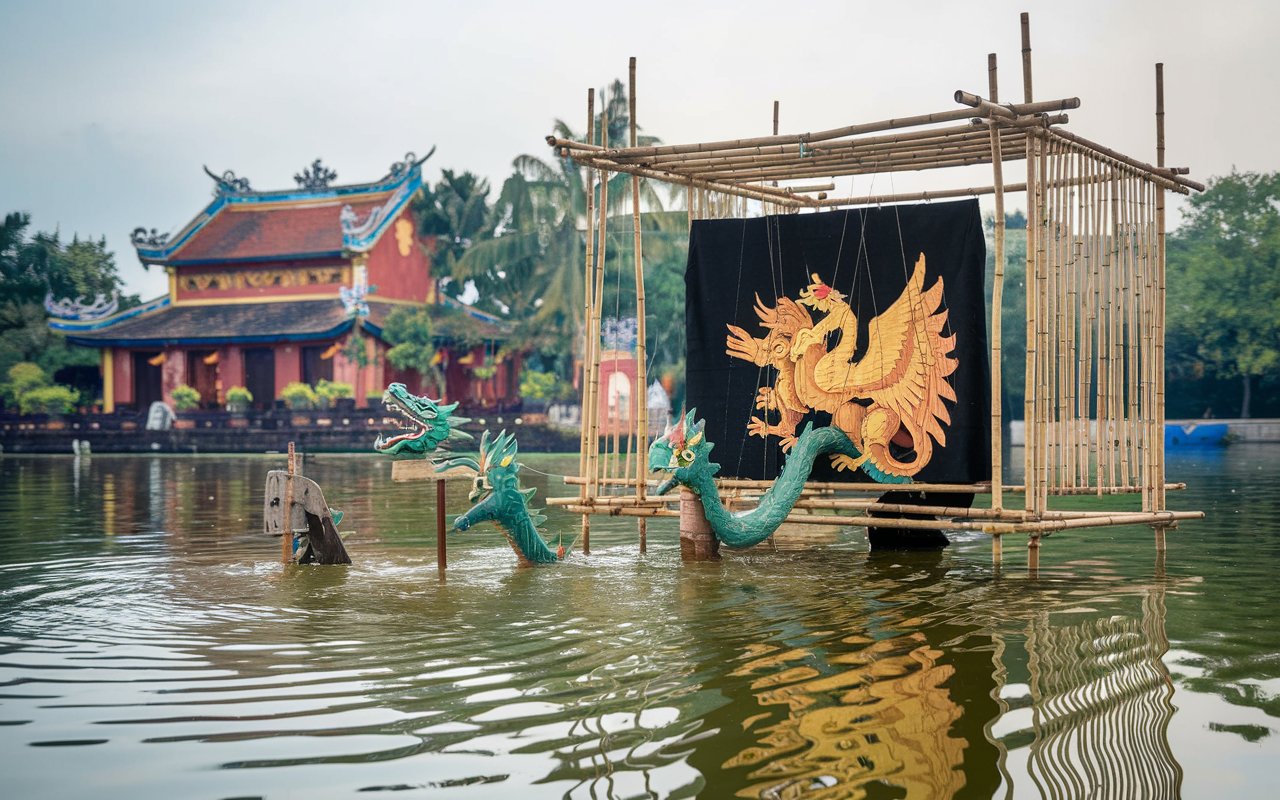Vietnam, officially known as the Socialist Republic of Vietnam, is a Southeast Asian country rich in history, culture, and natural beauty. From its breathtaking landscapes to its bustling cities, Vietnam offers something for every type of traveler. In this article, we will explore every aspect of Vietnam, offering insights, tips, and advice that go beyond what is typically found online. By the end, you will have a deeper understanding of this beautiful country and its unique charm.
Country Overview
Vietnam is located on the eastern side of the Indochina Peninsula, sharing borders with China, Laos, Cambodia, and the South China Sea. It boasts a population of over 96 million people, making it the 15th most populous country in the world. The country’s official language is Vietnamese, and the currency is the Vietnamese dong (VND).
Why Vietnam is Unique?
Vietnam is a country of contrasts. You’ll find everything from peaceful rural villages surrounded by rice paddies to modern, vibrant cities like Ho Chi Minh City and Hanoi. The country’s landscape includes stunning beaches, towering mountains, and the Mekong Delta’s vast river systems. This unique blend of tradition and modernity makes Vietnam a must-visit destination.
History of Vietnam
Vietnam has a rich and complex history, marked by periods of colonization, war, and eventual reunification. One of the key historical moments in Vietnam was the Vietnam War, which ended in 1975. The war had a profound impact on the country, shaping its culture, politics, and relations with other nations, particularly the United States.
Pre-Colonial and Colonial Periods
Before European colonization, Vietnam was ruled by various dynasties, with the Nguyễn dynasty being the last imperial family. French colonization began in the 19th century, which significantly influenced Vietnam’s architecture, food, and culture. While French rule brought modernization to some extent, it also sparked resistance movements that culminated in the country’s eventual independence.
The Vietnam War and Its Aftermath
The Vietnam War remains a defining chapter in the country’s history. After the war ended in 1975, Vietnam became a socialist republic. In the years that followed, the country struggled economically but began opening up to the global market in the 1980s with reforms known as “Đổi Mới.” These reforms allowed Vietnam to grow into one of the fastest-developing economies in Southeast Asia.
Natural Beauty and Attractions in Vietnam
One of Vietnam’s biggest draws is its stunning natural landscapes. From the terraced rice fields in the north to the sandy beaches in the south, Vietnam is a paradise for nature lovers. Here are some of the most famous natural attractions:
1. Ha Long Bay
Located in northern Vietnam, Ha Long Bay is a UNESCO World Heritage site known for its emerald waters and limestone islands. A cruise through this stunning bay is a must for anyone visiting the country.
2. Sapa and the Rice Terraces
Sapa is famous for its terraced rice fields and the ethnic minority villages that dot the landscape. Trekking through these terraces offers breathtaking views and a glimpse into the traditional way of life in rural Vietnam.
3. Phong Nha-Ke Bang National Park
Home to some of the world’s largest caves, Phong Nha-Ke Bang National Park is a wonder of nature. Adventurous travelers can explore the park’s massive caves, including the famous Sơn Đoòng Cave, the largest in the world.
4. Mekong Delta
In southern Vietnam, the Mekong Delta is known for its maze of rivers, swamps, and islands. The region is also home to floating markets where you can buy fresh produce and enjoy the local way of life.
5. Vietnamese Beaches
With over 3,000 kilometers of coastline, Vietnam is home to some of the world’s most beautiful beaches. Popular destinations include Nha Trang, Da Nang, and Phu Quoc Island, which offer crystal-clear waters and sandy shores perfect for relaxation.
Vietnamese Culture and Traditions
Vietnam is a country steeped in tradition, and its culture is deeply rooted in Confucianism, Buddhism, and Taoism. Festivals, family values, and respect for elders are central aspects of Vietnamese society.
Festivals and Celebrations
One of the most important celebrations in Vietnam is Tết, or the Lunar New Year. This holiday marks the beginning of the lunar calendar and is celebrated with family gatherings, feasts, and fireworks. Another significant festival is the Mid-Autumn Festival, which is celebrated with lanterns, mooncakes, and special performances.
Traditional Vietnamese Food
Vietnamese cuisine is world-renowned for its balance of flavors and freshness. The use of fresh herbs, vegetables, and a mix of sweet, salty, sour, and spicy elements makes it both healthy and delicious.
- Pho: A famous noodle soup made with beef or chicken, herbs, and a clear broth.
- Banh Mi: A French-inspired sandwich with a Vietnamese twist, typically filled with pork, pâté, cucumber, and pickled vegetables.
- Spring Rolls: Both fresh and fried versions of these rolls are popular, filled with shrimp, pork, and vegetables.
Sustainable Tourism in Vietnam
Sustainability has become a significant focus for Vietnam’s tourism industry. The government and local communities are increasingly emphasizing eco-friendly practices and preserving natural and cultural resources.
Several eco-tourism initiatives, such as homestays in rural villages and tours of organic farms, have gained popularity among travelers who wish to minimize their environmental impact.
Tips for Sustainable Travel in Vietnam
- Choose Eco-Friendly Accommodations: Many hotels and resorts in Vietnam are now incorporating sustainable practices like energy conservation and waste reduction.
- Support Local Businesses: Buy from local markets and stay at family-run homestays to ensure your spending supports local communities.
- Minimize Plastic Use: Carry a reusable water bottle and say no to plastic bags at markets and stores.
Vietnam’s Growing Economy and Modernization
In recent decades, Vietnam has emerged as one of Asia’s fastest-growing economies. The country’s transformation from a war-torn nation to a bustling, modern economy is nothing short of remarkable. Key industries include agriculture, manufacturing, and increasingly, technology.
Key Economic Hubs
- Ho Chi Minh City: The economic powerhouse of Vietnam, Ho Chi Minh City is a hub for commerce, finance, and trade. It is also home to a growing number of tech startups.
- Hanoi: The capital of Vietnam, Hanoi is known for its historic sites as well as being an important political and cultural center.
- Da Nang: As one of the fastest-growing cities in Vietnam, Da Nang is becoming an increasingly popular destination for foreign investment and tourism.
Travel Tips for Vietnam
To make the most of your trip to Vietnam, consider the following travel tips:
- Visa Requirements: Many visitors will need a visa to enter Vietnam. The country offers both single-entry and multiple-entry visas. Some nationalities are eligible for visa-free travel.
- Transportation: Getting around Vietnam is easy with its extensive transportation network. Domestic flights, trains, and buses are all widely available. Motorbikes are also a popular mode of transport for both locals and tourists.
- Best Time to Visit: The best time to visit Vietnam is during the dry season, which runs from November to April. During this period, the weather is more predictable, making it ideal for exploring the country’s outdoor attractions.
Conclusion
Vietnam is a country that offers a unique blend of natural beauty, rich culture, and modern dynamism. Whether you’re exploring its bustling cities, serene countryside, or pristine beaches, there’s something for everyone. By traveling sustainably and respecting the local culture, you can enjoy the best of what Vietnam has to offer while helping to preserve its beauty for future generations.
FAQs
1. What is the best time to visit Vietnam?
The best time to visit Vietnam is during the dry season from November to April.
2. Do I need a visa to visit Vietnam?
Most nationalities require a visa to enter Vietnam. Some countries are eligible for visa-free entry.
3. What are some must-visit places in Vietnam?
Must-visit places include Ha Long Bay, Sapa, Phong Nha-Ke Bang National Park, and the Mekong Delta.
4. What is the local currency in Vietnam?
The local currency in Vietnam is the Vietnamese dong (VND).
5. Is Vietnam safe for tourists?
Vietnam is generally considered safe for tourists, but it’s always good to be cautious of petty crimes like pickpocketing in crowded areas.
6. What is the main language spoken in Vietnam?
The main language spoken in Vietnam is Vietnamese.
7. What foods should I try in Vietnam?
Popular dishes include pho, banh mi, and spring rolls.
8. Can I use US dollars in Vietnam?
While US dollars are accepted in some tourist areas, it’s best to use the local currency, VND, for most transactions.
9. What is the capital city of Vietnam?
The capital city of Vietnam is Hanoi.
10. What is the weather like in Vietnam?
Vietnam has a tropical climate with a distinct rainy and dry season.



